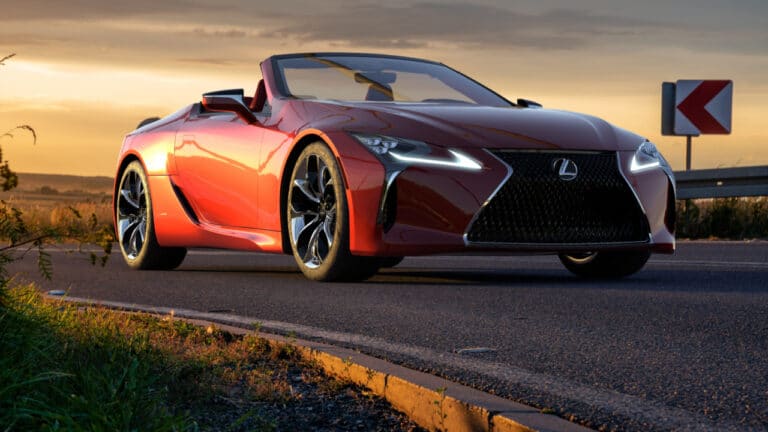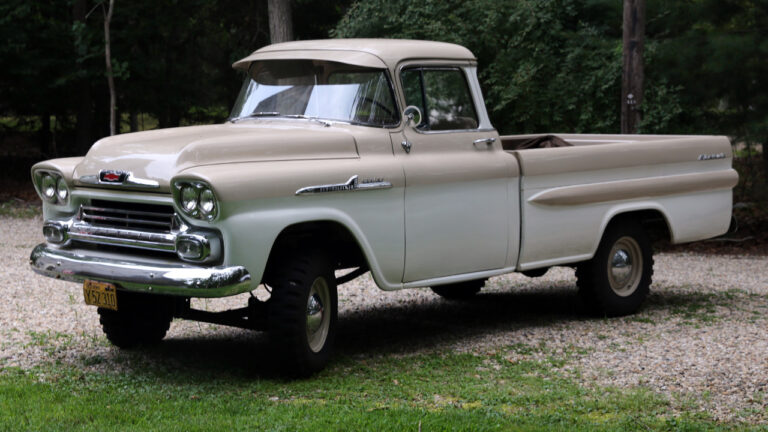13 Rarest Chrysler Cars Ever Made
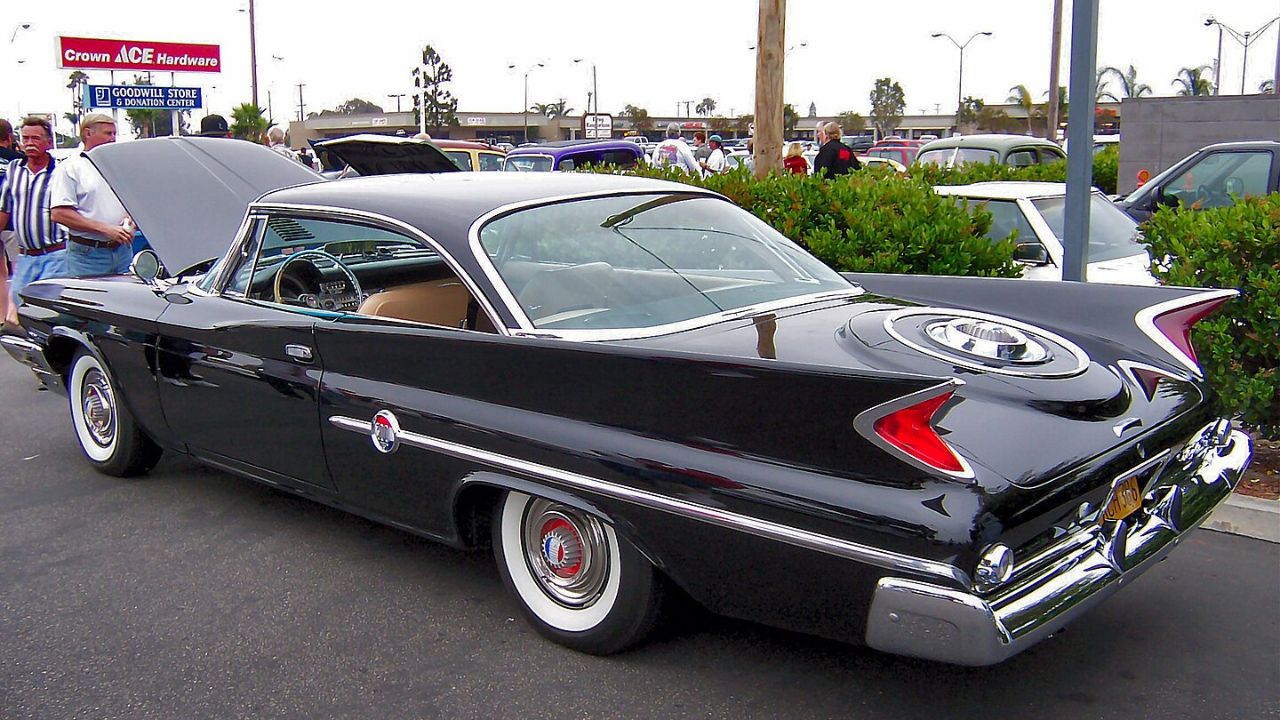
After ninety-nine years and counting, Chrysler has established a distinguished legacy of manufacturing some of the world’s most innovative and iconic automobiles.
In the company’s words, they’ve “built a legacy of turning ingenious ideas into breathtaking realities. With immersive technology and game-changing designs, [they’re] committed to evolving not only the Chrysler Brand but also the definition of mobility.”
With millions of cars manufactured over a hundred years and through numerous mergers, a select group of Chrysler cars seem to stand out for their rarity and exclusivity, even if not for their brilliance. This article spotlights 13 of the rarest Chrysler cars ever made.
1963 Chrysler Turbine Car

- Fifty-Five Units Produced
The Turbine Car was an experimental project that Chrysler introduced in 1963 to test the viability of turbine-powered cars. Chrysler scrapped the project because the high cost of making the vehicles was impractical for mass production. Chrysler manufactured 55 examples, but most ended up destroyed due to customs-related factors (Chrysler sourced some of the parts overseas).
Chrysler loaned 50 Turbine Cars to 203 average American families as part of the public user program. Each family had the car for three months and provided feedback on the turbine technology, most of which was reportedly mostly positive.
In the end, Chrysler recalled and destroyed 46 of the 55, with five of the nine surviving models distributed to museums like the Henry Ford Museum in Michigan. The remaining four were non-functional and stayed with Chrysler.
1960 Chrysler 300F Special Gran Turismo

- Nine Units Produced
The Chrysler 300F Special Gran Turismo is extremely rare because there were only 9 units produced. It is a highly coveted model in the prestigious Chrysler 300 “letter series” that were known for their luxury and high performance.
It had a top speed of over 145 mph, and that was no small feat in the 1960s when the 300F Special Gran Turismo was introduced. This allowed it to set numerous speed records at the Daytona Speed Week. Its heart is a 6.8-liter (413 cu-in) “Cross-Ram” V8 engine producing 375-hp. It featured dual four-barrel carburetors mounted on long, tuned intake runners.
1941 Chrysler Newport Phaeton

- Five Units Produced
Introduced in 1941, the Chrysler Newport Phaeton is an ultra-rare pre-WWII luxury model, with just five units produced. It was a dual phaeton (two windshields, each for the front and rear passenger) inspired by the 18th and 19th-centuries 4-wheeled horse-drawn open carriages that were considered sporty and stylish grand tourers in the 1920s and ‘30s.
The Art Deco movement was heavily represented all over the car’s styling. Chrysler made so few because the Newport Phaeton was primarily a show car for the company’s design and engineering breakthroughs.
1957 Chrysler 300C Convertible

- 484 Units Produced
The classic 300C is a sought-after member of the celebrated Chrysler “letter series” high-performance luxury line. It is one of the most iconic vehicles in both Chrysler’s and America’s automotive history. It is an extremely rare collector car, with just 484 units built in 1957.
It’s unmistakable with its period-correct wide grille, twin headlights, and distinguishing tailfins. The propulsion power came from a 6.4-liter (392 cu-in) HEMI V8, producing a then-impressive 375-hp. Naturally, the interior showcased a lavish display of luxury, marked by a padded dashboard, leather upholstery, and chrome accents.
1970 Chrysler 300 Hurst

- Approximately 500 Units Produced
The Hurst is a significantly rarer Chrysler 300 Series based on the 2-door hardtop model. Approximately 500 units were collaboratively produced between Chrysler and Hurst Performance, although anywhere between 485 and 502 has been mentioned as the specific figure.
The Hurst model stood out with a Spinnaker White paint and contrasting gold trim, while those with an eye for such things could spot the fiberglass hood with a functional scoop and hood pins. The trunk lid also featured a Hurst-integrated spoiler.
Hurst and Chrysler settled for the 7.2-liter (440 cu-in) TNT V8 for propulsion power, producing 375-hp and 480 lb-ft of torque. It was Chrysler’s most potent unit at the time.
1956 Chrysler 300B

- 1,102 Units Produced
The 300B is among the earliest models of the prestigious Chrysler 300 “letter series” luxury performance cars. The “letter series” family began with the C-300 in 1955, followed by the 300B in 1956, making the latter a confirmed progenitor in the “letter series” family.
The rest of the gang include the 300C (discussed above), 300D (1958), 300E (1959), 300F (1960), 300G (1961), 300H (1962), 300J (1963), 300K (1964) and the 1965 300L. All, including the 300B, were known for their powerful engines and luxuriously appointed interiors.
Right on the C-300’s heels, the 300B unveiled subtle changes, such as chrome accents, to distinguish it from its predecessor. Approximately a thousand units were made, making them relatively exclusive and elusive even at the time.
Chrysler Airflow (1934-1937)

- Approximately 29,400 Units Produced
Compared to the others so far, the Chrysler Airflow was produced in relatively large figures. However, the Airflow is a decidedly low-production model for a model that enjoyed a 4-year-long production run.
The introductory model in 1934 posted the highest production figures at 10,839 units. It went downhill from then onwards, plunging from around 7,500 units in 1935 to 4,600 in 1937.
The declining sales figures reflected the mixed reception of Airflow’s innovative but controversial design. It was one of the first cars built from the ground up with aerodynamics in mind.
1941 Chrysler Newport Indy 500 Pacemaker

- One Unit Modified (By LeBaron)
The 1941 Chrysler Newport Phaeton got the call up to serves as that year’s pace car in the Indianapolis 500. It made the Ralph Roberts and LeBaron-designed Newport Phaeton one of the coolest and rarest cars to be so honored in the Triple Crown of Motorsport history.
The Phaeton was already a limited-production model (five examples produced), effectively making the Indy 500 version an ultra-rare Chrysler akin to a unicorn. The LeBaron-built example is the sole Phaeton with exposed headlights.
Autoweek wrote that the 1941 Chrysler Newport Indy 500 Pacemaker became the personal car of none other than Walter P. Chrysler Jr. after completing service as the 1941 Indy pace car. It changed hands only a few times since then before popping up for auction in 2013 and changing hands for a mouth-watering $800,000.
Chrysler TC by Maserati (1989-1991)
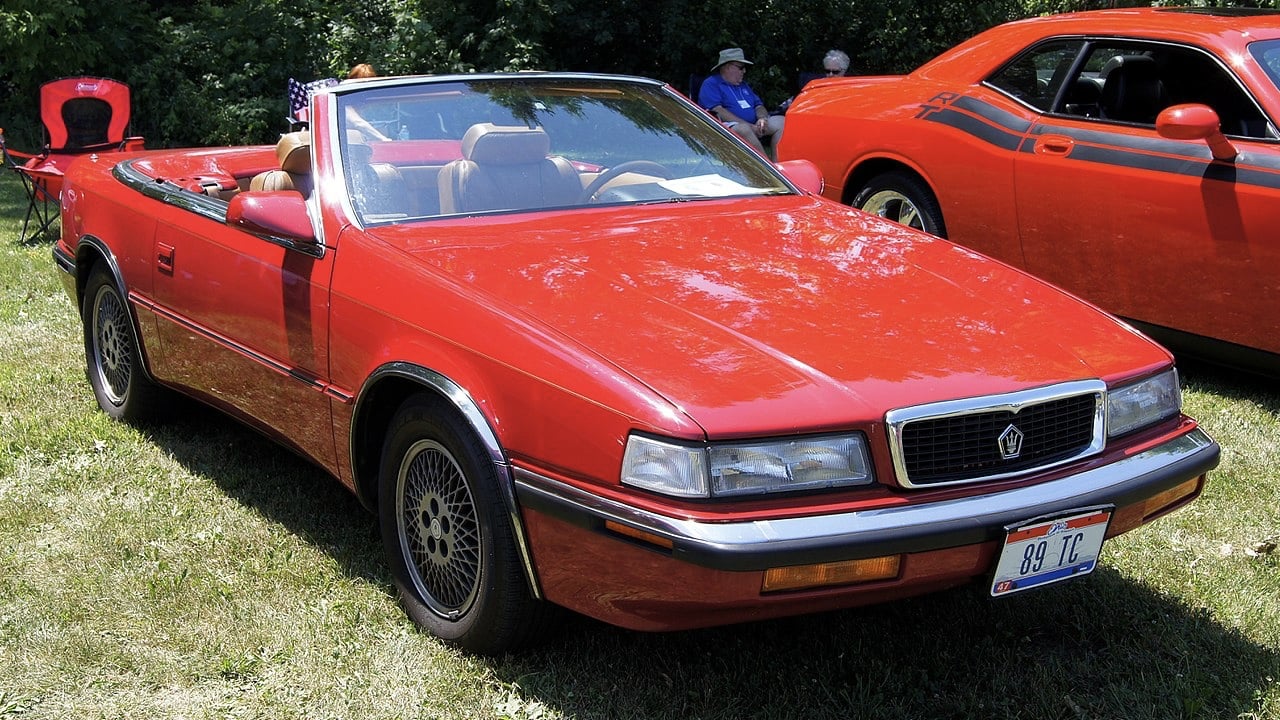
- 7,300 Units Produced
Though produced in relatively large numbers compared to others on this list, the TC by Maserati remains one of the rarest Chrysler cars. It was the product of a unique marriage between Chrysler and Maserati from 1989 to 1991, riding on a modified version of the Chrysler K platform.
Short for Touring Convertible, the TC was a luxury 2-seat convertible with a removable hardtop and soft top. It was finished in Milan, as Maserati was responsible for the car’s body.
The Italian automaker tuned the Chrysler-supplied 2.2-liter turbocharged inline-4 (base engine) and the later 3.0-liter V6. The rarest powerplant for the TC is the 220-hp 2.2-liter DOHC Turbo III inline-4 that Chrysler co-developed with Lotus. It was mated exclusively to a 5-speed Getrag manual transmission.
1947 Chrysler Town & Country Roadster

- 3 Units Produced
The 1947 Chrysler Town & Country is an ultra-rare collector car with just 3 units produced. It represents the post-World War II era luxury and style, highlighted by the hallmark wood finishing of Chrysler’s Town & Country models.
Note that while Chrysler produced 2,169 Town and Countries between 1941 and 1988 (according to Wikipedia), just three roadsters were made in 1947.
It used a straight-8 engine paired with Chrysler’s Fluid Drive transmission (a semi-automatic the company used back then). These cars, with their mahogany and white ash wood panels, stood markedly apart from the conventional steel-bodied construction.
1958 Chrysler 300D
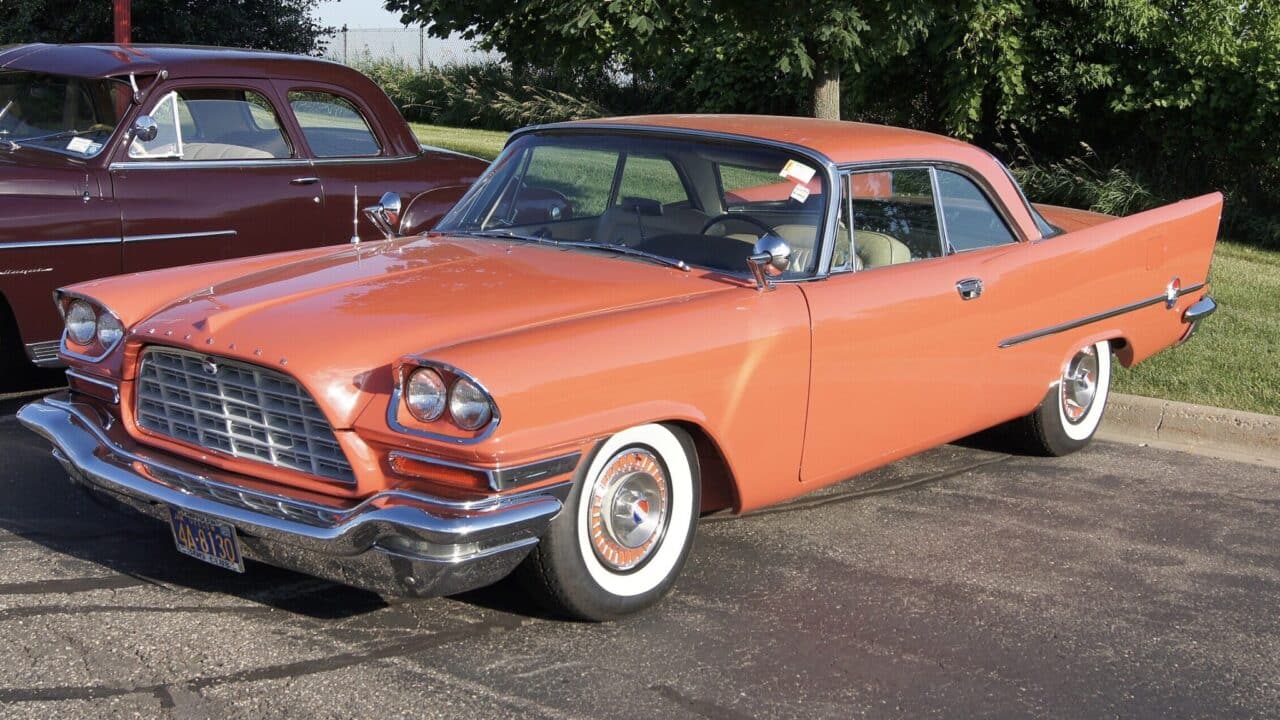
- 618 Units Produced
Apparently, the “letter series” Chryslers are some of the rarest models in the marque’s history. The 1958 model year was the 300D’s turn in the series lineup, flaunting a muscular profile characteristic of the late 1950s American cars.
It showed off the “letter series”-inspired imposing grille and quad headlights, topping it off with the jet-age-influenced tailfins.
It also contributed its quota to the “letter series” racing heritage, particularly the NASCAR. The propulsion power came from a 6.4-liter (392 cu-in) HEMI producing 380-hp. There were just 618 300Ds made, making it yet another rare Chrysler 300.
1966 Chrysler Imperial Crown Convertible

- 514 Units Produced
The Imperial Crown was part of the Imperial Chrysler luxury line produced in phases from 1956 to 1975. The Convertible model, introduced for the first time in 1957 and offered only until 1968, exemplified the nameplate’s status as an iconic example of luxury and style.
The convertible’s debut spearheaded Chrysler’s move to position the Imperial brand as a standalone, high-end marque like Cadillac and Lincoln. As such, the convertible debuted in 1957 with dramatic look-at-me styling highlighted by sweeping fins.
The 1966 model year is the rarest Imperial Crown Convertible, with only 514 units produced. It showcased modern features like a power-operated convertible top, push-button controls, and an optional AM/FM radio. It used the 350-hp 7.2-liter V8.
1955 Chrysler C-300

- 1,725 Units Produced
It’s just as well we should round off this article with another member of the “letter series” family — the 1955 Chrysler C-300. Being the first of the series makes it a landmark model not just in Chrysler’s but in America’s automotive history.
The tail fins weren’t as pronounced yet, but it pioneered the imposing front grille and even dual exhausts. It relied on a 5.4-liter 331 cu-in HEMI V8 with 300-hp, an output you didn’t see every day on a production car from that era. It was enough to earn the Chrysler C-300 the title of “America’s Most Powerful Car,” and the car’s name was a nod to the engine’s output.




